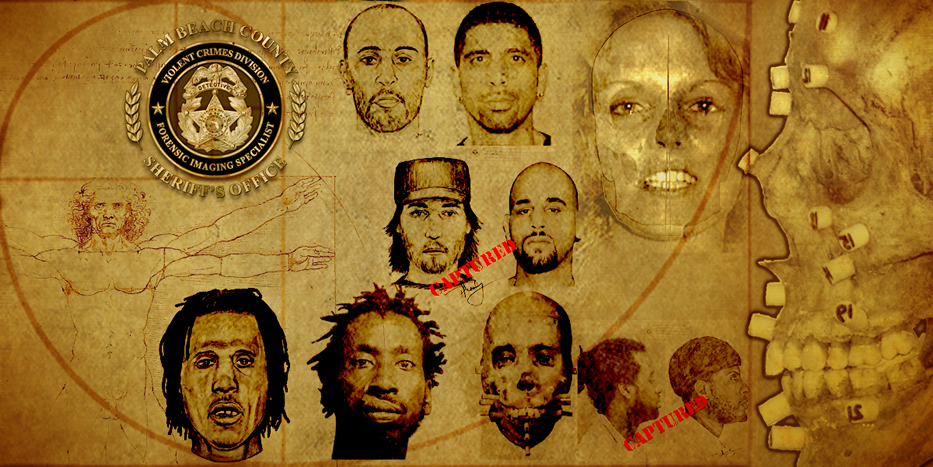
What is Forensic Imaging?
Also known as Forensic art, it is any graphic image that aids in the apprehension or conviction of a criminal offender, or aids in the identification of unknown deceased persons. It is primarily used to present visual information to aid law enforcement in focusing on the appearance of a suspect or victim. There are four categories of forensic imaging/art including:
- Composite Imagery: Graphic images composed of individually described characteristics of the human face (may also include full body drawings or objects). This category includes images drawn by hand, computer-assisted images, or computer-generated images using “sketching” software.
- Image Modification: Methods of manipulation, enhancement and comparison, as well as the categorization of photographic images. This includes age progression, age regression and fugitive update drawings.
- Demonstrative Evidence: Visual information used for court purposes (images presented to the jury during trial) which can digital or sketched by hand.
- Reconstructive/Postmortem Drawings: Methods of identifying human remains in various conditions of decomposition. These include 2-Dimensional and 3-Dimensional facial reconstructions from the skull, as well as sketches and digital images.
Most often, a forensic artist is called upon to interview a victim or witness about the description of a suspect from a crime in which there are no other leads. The artist interviews the victim/witness on the various features of the face, documents these features, and creates a two dimensional likeness of the suspect involved in the crime. The composite image can also include objects such as tattoos, clothing, vehicles and jewelry to aid in the investigation. The law enforcement agency then works with the media and other agencies to circulate the composite image to the general public to generate tips as to the identity of this suspect. The composite sketch is often an important tool in the investigation.
Forensic artists may also be called upon to assist with a post mortem drawing or facial reconstruction from a skull. This is done when human remains are recovered but investigators have been unable to identify the body. The forensic artist’s image can assist investigators in searching missing persons databases. The identification can then be positively made by DNA or dental comparisons.
Please click on the links below to view unidentified person, persons that have been identified, suspects in high profile case and suspects who have been identified and an arrest has been made. If you recognize any of these individuals, please contact Palm Beach County Sheriff’s Office by dialing (561) 688-3000 or Palm Beach County Crime Stoppers by dialing 1-800-458-TIPS (8477).


